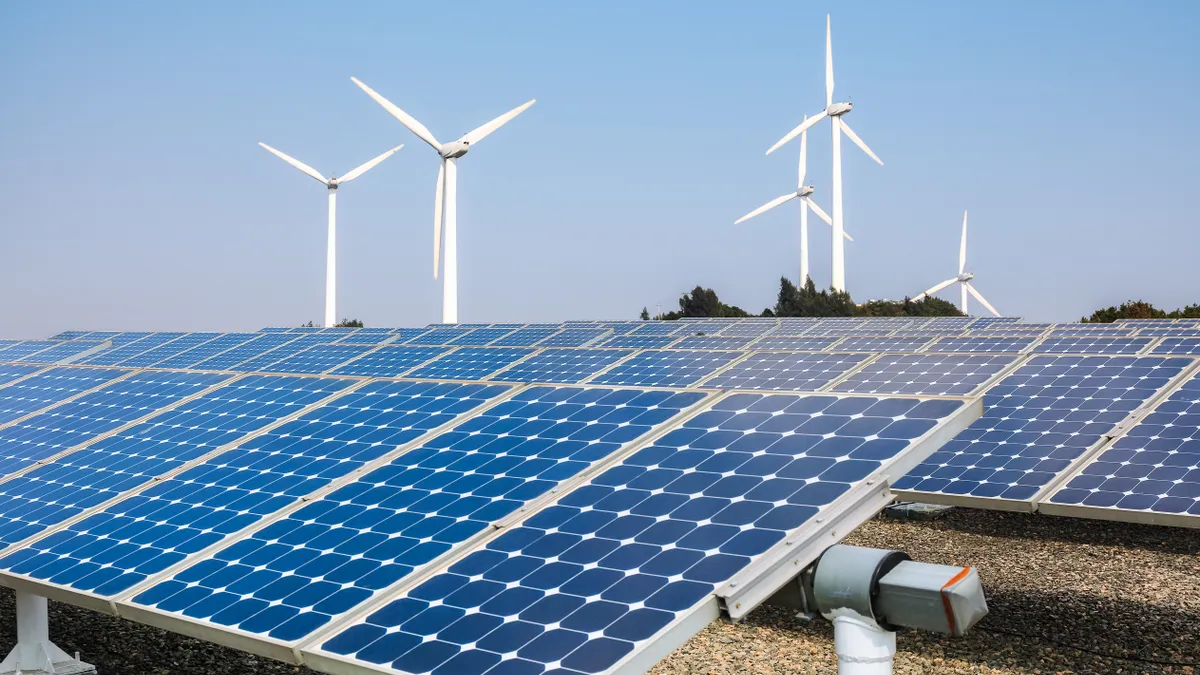Dive Brief:
-
Connecticut Gov. Ned Lamont, D, signed an executive order Tuesday directing state regulators to lay out a plan to reach 100% carbon-free electricity by 2040.
-
Eight other states and the District of Columbia have taken legislative or executive action toward 100% clean energy in the past few years. While environmental advocates and state lawmakers were overall pleased with the directive, they said more concrete action would be needed to get the state to those goals, and that some policies seemed to be moving backwards.
-
Specifically, advocates and lawmakers were disappointed by the administration's commitment to building a new natural gas plant. "It's not a bridge fuel. It's a fossil fuel," Senior Policy Advocate and Connecticut Director at Acadia Center Amy McLean Salls told Utility Dive. "And if we're going to be meeting our goals, then we have to be not building new gas infrastructure."
Dive Insight:
As more states move toward aggressive clean energy goals, it remains a balance among gubernatorial leadership, legislative action and utility and other stakeholder cooperation. But some stakeholders say policy needs to be more aggressive.
"This is a directive to work toward that, to study that, to plan for that. But, from our perspective, we also need there to be action toward that," said McLean Salls.
During the forum the administration said it was committed to building its Killingly Energy Center, a 650 MW natural gas-fired plant, expected to begin commercial operation in 2022, which frustrated some in the audience.
"Apparently, it's just a bridge energy source we're resigned to depend on until we approach 2040 and our carbon-free goal," Rep. Jonathon Steinberg, D, who serves on the House Energy and Technology Committee, told Utility Dive in an email. "There weren't even promises to scale back residential hookup expansion, saving pipeline capacity for industry use and electric generation, which surprised me a little."
Much of the conversation in Connecticut was focused on solar and net metering in the last legislative session.
Legislators passed a bill in May that would keep the state's net metering program through Dec. 2021, after a 2018 law threatened to end it by October of this year. That bill was originally a larger, comprehensive clean energy bill, but was whittled down during the session to the disappointment of some state lawmakers and clean energy advocates.
But stakeholders are still cautiously optimistic the governor's move is a positive sign.
"One could not be but encouraged," said Steinberg. "...But [Tuesday's event] was hardly a Climate Change Forum. Other than the formal sign-in of the Executive Order, the Administration revealed little. It will be up to all of us ... to define the short and long-term [agendas]."
The order specifically directs the state's Department of Energy and Environmental Protection (DEEP) to "analyze pathways and recommend strategies" for reaching the goal.
DEEP did not respond to Utility Dive's request for comment.
The administration has notably been more aggressive on some clean energy goals, noted Steinberg, including the state's June Request for Proposals for 2 GW of offshore wind development.
"There are no signs that this administration intends to back down on it's market-based philosophy for solar, favoring tariffs over REC subsidies," said Steinberg, adding he wished they "would embrace an explicitly aggressive position on Solar, as they clearly have on Wind."















